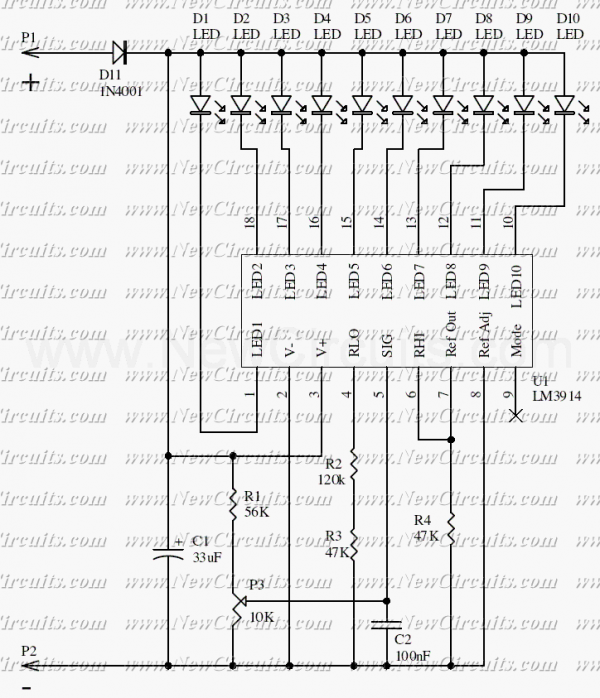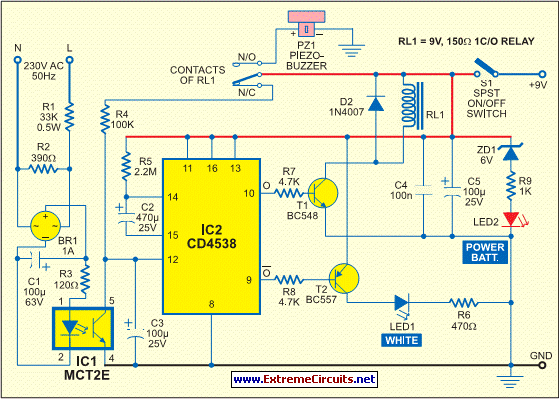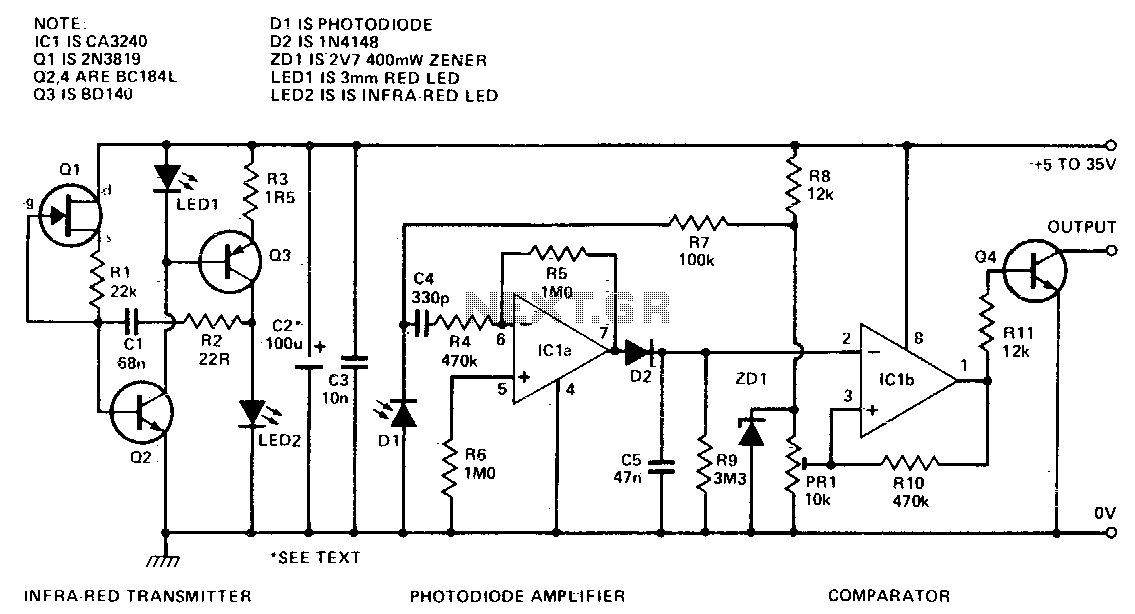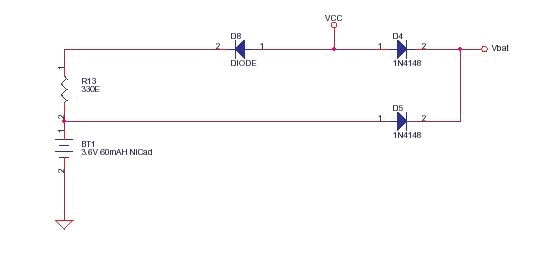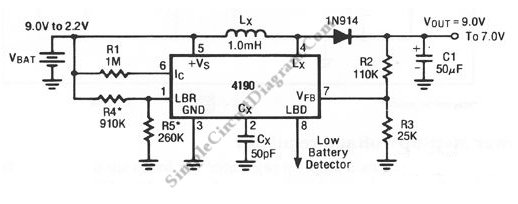
Car Battery Failure Detector
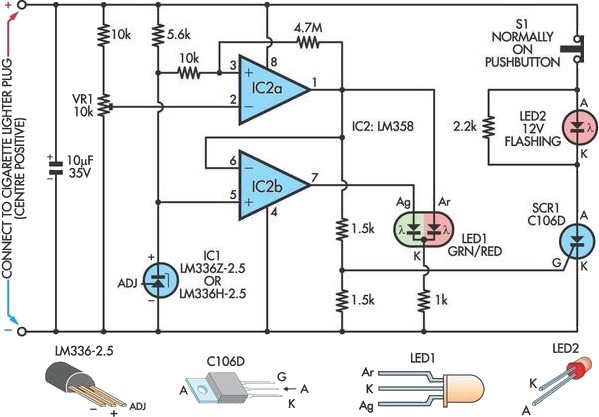
A car battery deteriorates in use, and its life seldom exceeds four years. When new, its voltage may drop to only 2V while cranking the engine.
A car battery, typically a lead-acid type, is essential for providing the necessary electrical energy to start the vehicle's engine and power its electrical systems when the engine is off. Over time, the chemical reactions within the battery lead to deterioration, which manifests as a gradual loss of capacity and efficiency. The average lifespan of a car battery is around four years, although this can vary based on factors such as climate, driving habits, and maintenance practices.
When a car battery is new, it is designed to deliver a nominal voltage of around 12.6 volts when fully charged. However, during the high-demand process of cranking the engine, the voltage can drop significantly. A voltage drop to as low as 2V is indicative of a battery that is either nearing the end of its life or is suffering from severe internal resistance due to sulfation or other degradation processes.
In practical applications, monitoring the battery voltage during cranking can provide insights into its health. A significant drop in voltage suggests that the battery may not be able to hold charge effectively, which can lead to starting issues or electrical failures. Regular maintenance, including checking the battery terminals for corrosion, ensuring a proper charge, and replacing the battery every few years, can help mitigate these issues and prolong the overall performance of the vehicle's electrical system.A car battery deteriorates in use and its life seldom exceeds four years. When new, its voltage may drop to only 2V while cranking the engine. As the batt.. 🔗 External reference
A car battery, typically a lead-acid type, is essential for providing the necessary electrical energy to start the vehicle's engine and power its electrical systems when the engine is off. Over time, the chemical reactions within the battery lead to deterioration, which manifests as a gradual loss of capacity and efficiency. The average lifespan of a car battery is around four years, although this can vary based on factors such as climate, driving habits, and maintenance practices.
When a car battery is new, it is designed to deliver a nominal voltage of around 12.6 volts when fully charged. However, during the high-demand process of cranking the engine, the voltage can drop significantly. A voltage drop to as low as 2V is indicative of a battery that is either nearing the end of its life or is suffering from severe internal resistance due to sulfation or other degradation processes.
In practical applications, monitoring the battery voltage during cranking can provide insights into its health. A significant drop in voltage suggests that the battery may not be able to hold charge effectively, which can lead to starting issues or electrical failures. Regular maintenance, including checking the battery terminals for corrosion, ensuring a proper charge, and replacing the battery every few years, can help mitigate these issues and prolong the overall performance of the vehicle's electrical system.A car battery deteriorates in use and its life seldom exceeds four years. When new, its voltage may drop to only 2V while cranking the engine. As the batt.. 🔗 External reference
